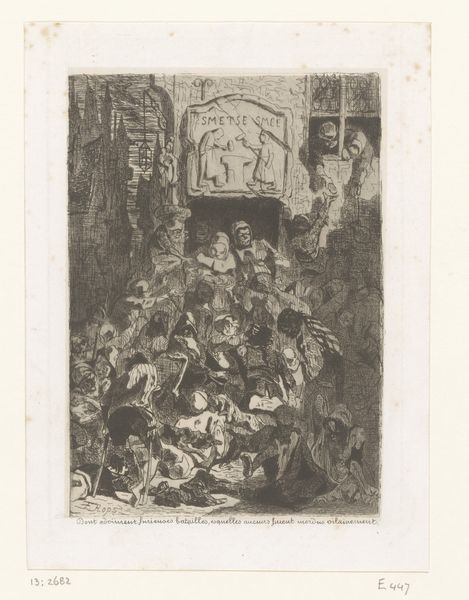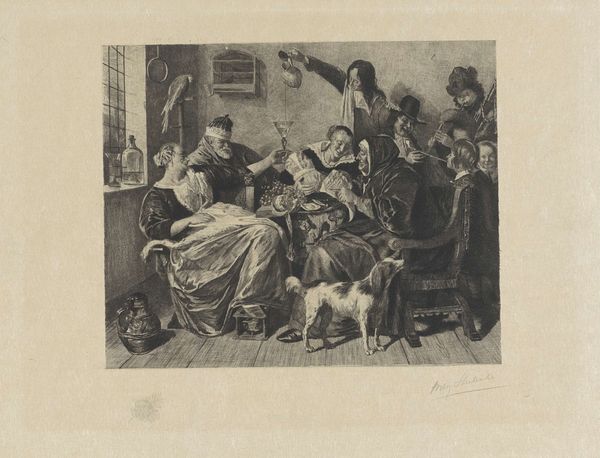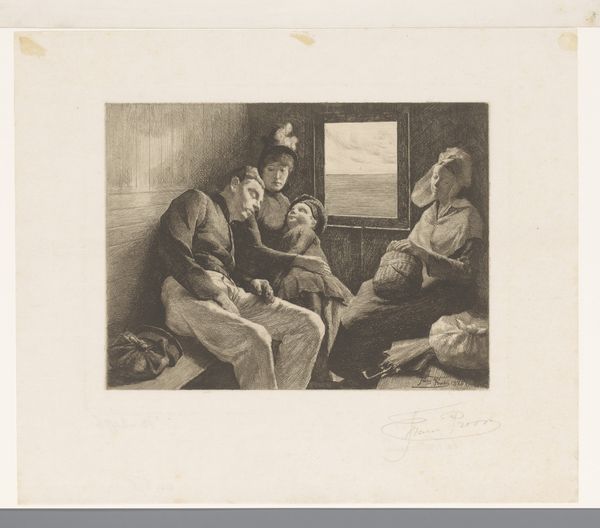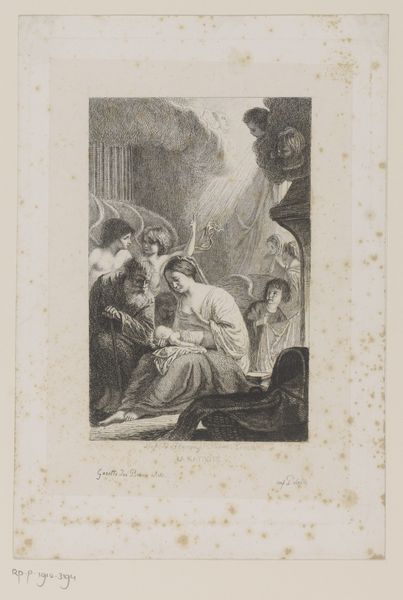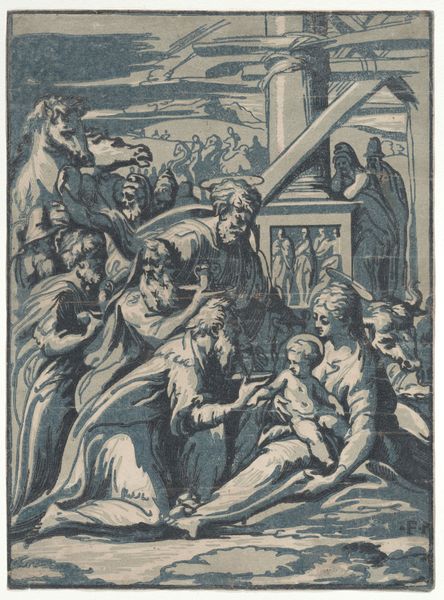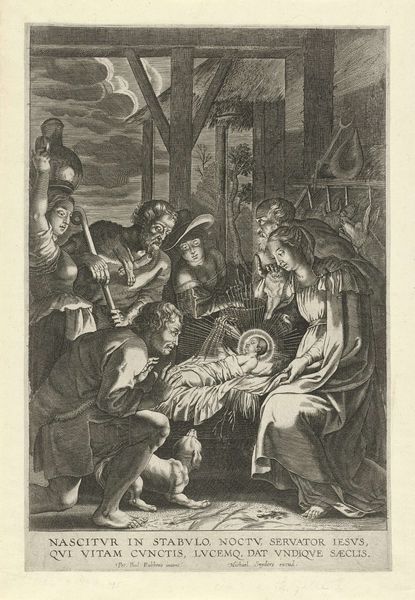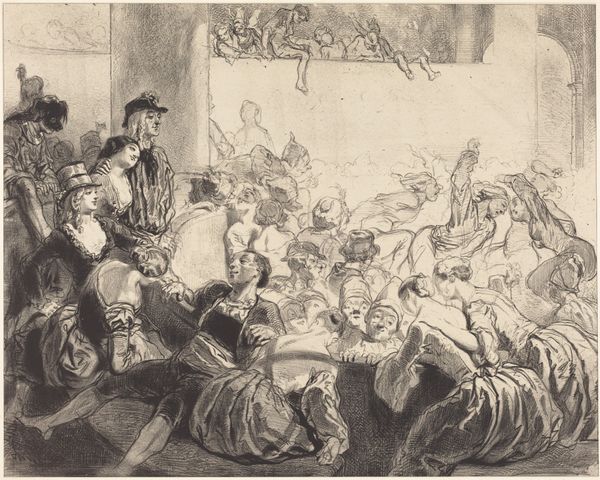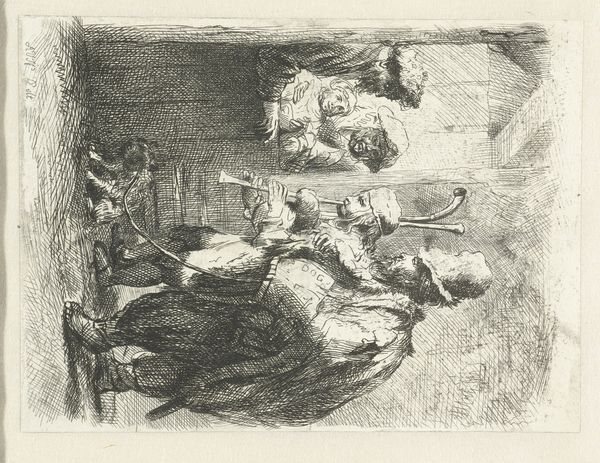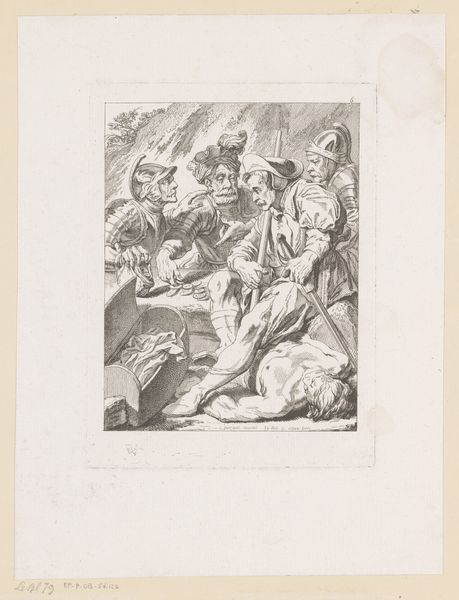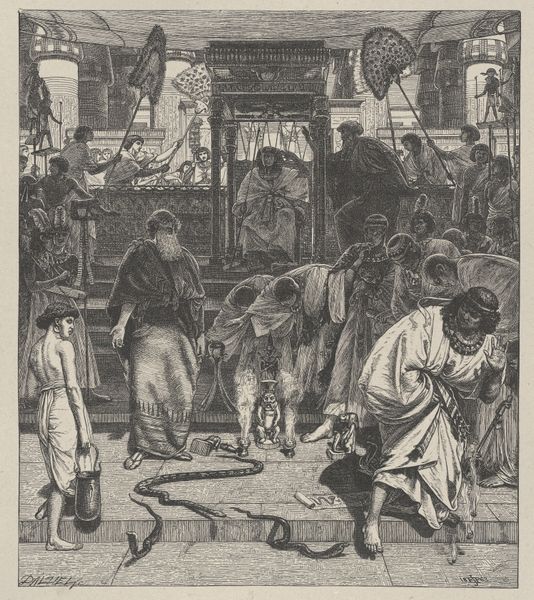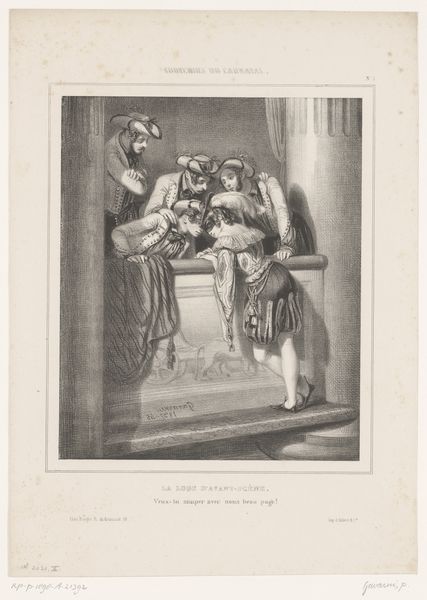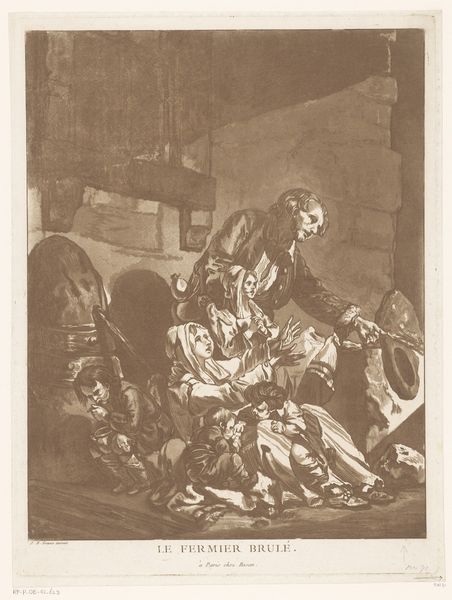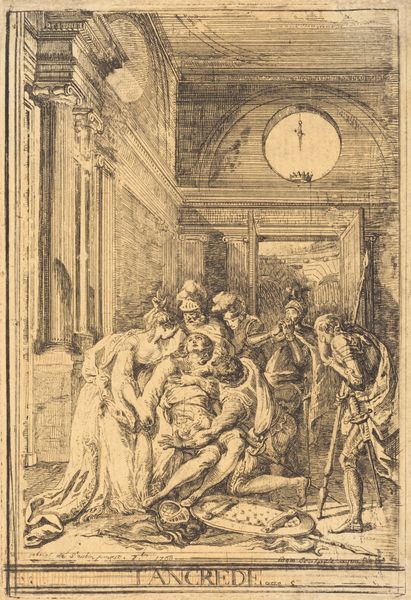
Omnibus Life in London, from "Illustrated London News" 1859
0:00
0:00
drawing, print, woodcut, engraving
#
portrait
#
drawing
# print
#
child
#
woodcut
#
men
#
cityscape
#
genre-painting
#
engraving
#
realism
Dimensions: Sheet: 10 3/8 × 9 9/16 in. (26.4 × 24.3 cm)
Copyright: Public Domain
Curator: This woodcut, titled "Omnibus Life in London," appeared in the "Illustrated London News" in 1859. It gives us a glimpse into the daily commute of Londoners in the mid-19th century. Editor: My immediate impression is one of constrained movement. Everyone seems packed together, almost struggling for breathing room, which highlights the intense urbanization happening at that time. Curator: Precisely. Egley, the artist, captures the diversity within this confined space. Consider the clear social stratification: the top hats and fine garments juxtaposed with the simpler attire. This speaks volumes about class relations of Victorian London and how shared, often uncomfortable, public spaces facilitated interactions--however brief--between different strata. Editor: And these signifiers carry deep resonance! The top hat, then, a symbol of the bourgeois male. Hats communicate social role and economic status in so many visual cues! Also, the carriage itself as symbol. Curator: Indeed, it points to burgeoning industrialization and transportation innovation, but the woodcut's intimate portrayal of the figures directs our attention back to humanity navigating modernity. There's an inherent tension – this striving for progress contrasted with the persistent inequalities that define London's social fabric. Notice how the artist uses a rather severe realism to give a sense of being there. Editor: I do find that remarkable -- a powerful, visceral effect, though rendered through this rather traditional engraving technique. But consider also how the crowdedness speaks to urban anonymity even within proximity. Curator: That’s a keen observation! This is what’s known as social alienation: the passengers share the carriage but their inward gaze and detached expressions reveal that shared physical space does not translate into any form of social bonding. It reflects wider themes of displacement in modernity. Editor: The woodcut operates almost like a microcosm – capturing larger cultural shifts within something as simple as an omnibus ride. These are potent symbols for later times, speaking about urbanization's mixed social implications across time. Curator: Looking at this from a more modern viewpoint really allows me to understand historical progress and inequality within our society, as if peering through a keyhole in history. Editor: Agreed; Egley's depiction allows one to draw historical comparison -- his careful compositions allow those images to persist long after the era's end, to prompt our reflection on human development as an emotional process, rather than only socioeconomic evolution.
Comments
No comments
Be the first to comment and join the conversation on the ultimate creative platform.
